While people know that garage doors are noisy, some are way noisier than others. Scraping metal and loud machinery aren’t often a good combination for happy neighbors. You may have even gotten some complaints about your garage door and wonder what you can do about it.
Don’t worry because there are plenty of things you can do to make your garage door quieter. Whether you’re in a band, love DIY with power tools, or just have a garage door that makes a racket, there are concrete steps you can take today to soundproof your garage door.
In this article, we’ll teach you how to soundproof a garage door and other areas of your garage. While some methods are relatively inexpensive, soundproofing a loud room like a garage might be more expensive than other areas of your house.
No matter you’re budget, we’re sure one of the following tips and tricks will give you and your neighbors some much-needed peace of mind.
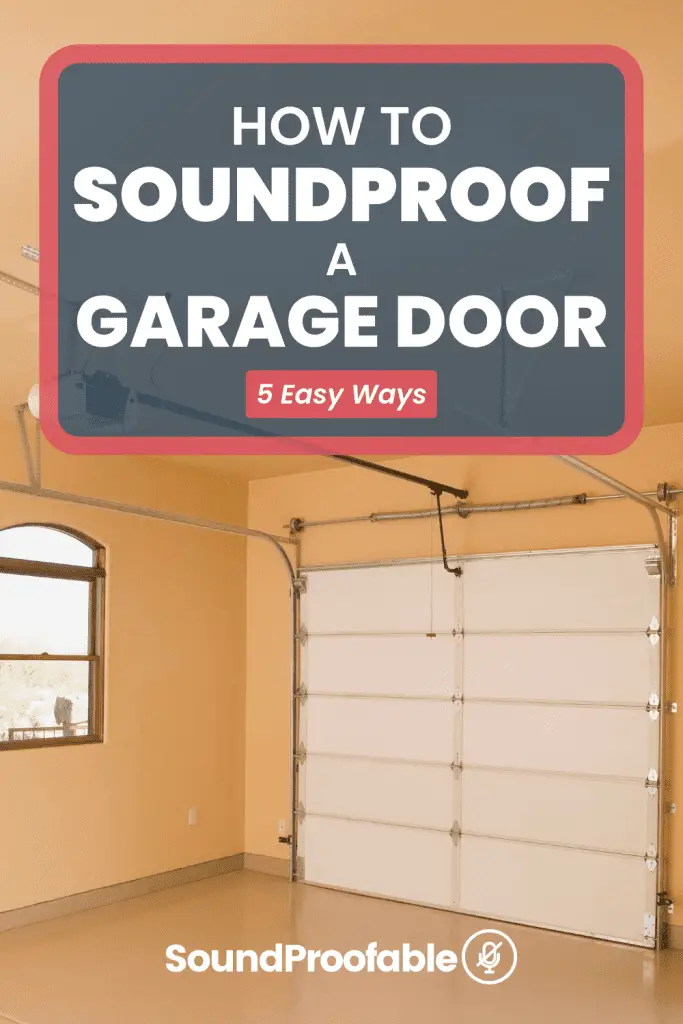
1. Seal Any Gaps Around the Door
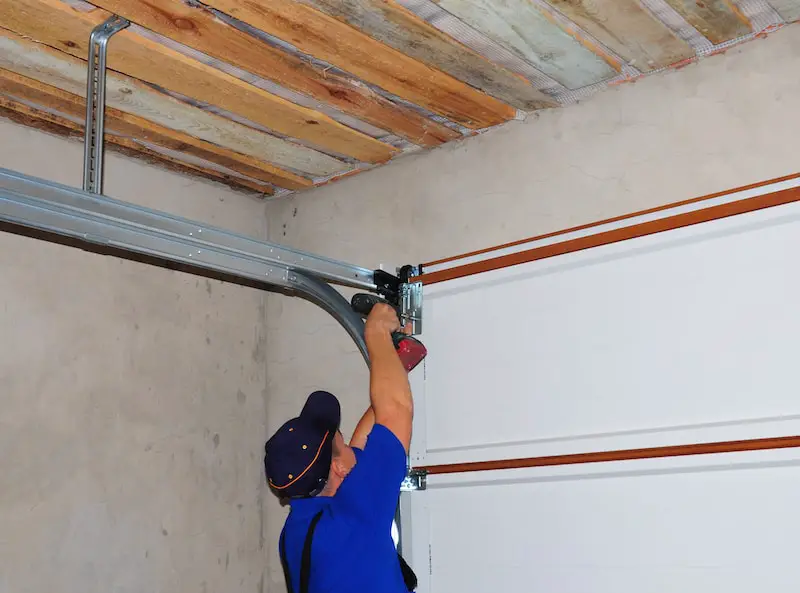
The first thing you need to do before soundproofing the rest of your garage is sealing any gaps that might be around your garage door. Openings allow air to carry soundwaves into or out of your garage. By filling the gaps, you prevent sound from escaping the garage, along with sounds from entering.
Using weather-stripping tape on the gaps around your garage deal will create a seal that’s good enough to block sound. Try to overlap onto the actual wall to ensure the seal is airtight. Don’t hesitate to double or triple-up on layers if you feel the adhesive is too weak.
While any type of weather-stripping tape will do, try to find one specifically designed for garage doors. It will help insulate the room better and stay sticky despite any wetness of humidity that can develop in a closed garage.
2. Soundproof Your Garage Air Vents
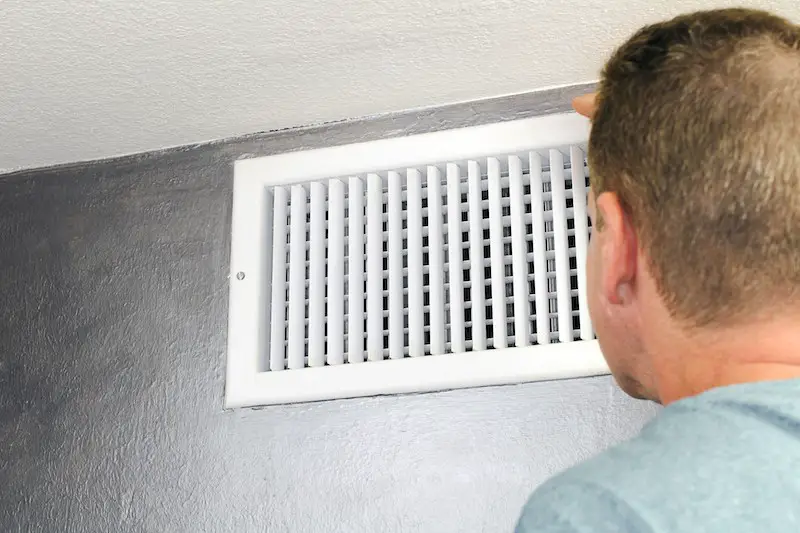
Before moving onto the actual door, you need to check your garage air vents first. They’re often one of the main passageways for sound to travel. Vents are also commonly made of thin metal such as tin or aluminum, which dramatically intensify even small echoes.
One of the best ways to soundproof your garage air vents is to create what is called a “sound maze.” Essentially, a sound maze is a series of sticks covered in acoustic foam. You arrange the sticks in a zipper fashion inside the vent, allowing air to pass through but preventing sound from reaching the other side.
To make a sound maze, simply gather a few one to two-inch-thick pieces of wood and trim them to about two-thirds the width of your air vent. Then, cover them in acoustic foam. If the sticks are fairly sharp at one end, you can make a rough foam cut and just jam the stick inside.
Arrange your foam-covered sticks inside the vent, alternating between the left and right sides. However, don’t worry too much about perfect positioning. Just make sure that none of the sticks touch each other, and you should now have a soundproof yet breathable air vent.
Also, air vents might have small but noticeable gaps between the wall. Seal these with the same weather-stripping tape you used on the gaps around your garage door. Doing so will help prevent any noise leakage around the air vent itself.
3. Insulate Your Garage Door
Now that you’ve handled the problem areas around your garage door, it’s time to tackle the main issue itself. While it may seem intimidating to soundproof something as large as a garage door, you might be surprised by how straightforward it can be.
First, you need to decide on which material you want to cover the door. Some are better than others at soundproofing but may be more expensive.
Install Mass Loaded Vinyl Panels
- Made in the USA - High Quality!
- Perfect for Automobiles, Condos, Apartments, Studios, Classrooms, Medical Facilities...
- 1 pound per square foot density.
Installing Mass Loaded Vinyl (MLV) is one of the best ways you can soundproof your garage door. Manufacturers design MLV panels specifically with soundproofing capability in mind.
MLV panels absorb and repel sound better than almost any other material. While they are a bit expensive, you’ll notice a night and day difference in your garage’s soundproofing.
First, cut your MLV panels down to match the size of each panel on your garage door. Securing smaller MLV squares might be easier than larger ones, but it really depends on your garage door’s design.
Next, use hanging strips, spray adhesive, or even screws or nails to secure MLV fiberglass panels to the inside of your garage door. Hanging strips are the best because they actually increase the panel’s soundproofing ability, but spray adhesive is another great option.
If you’re worried about blocking all sound frequencies, especially high-frequencies emitted from things like power tools, install double-layered MLV panels on your garage door. While one layer might be sufficient, two is always better for soundproofing against all sound frequencies.
Install Acoustic Panels
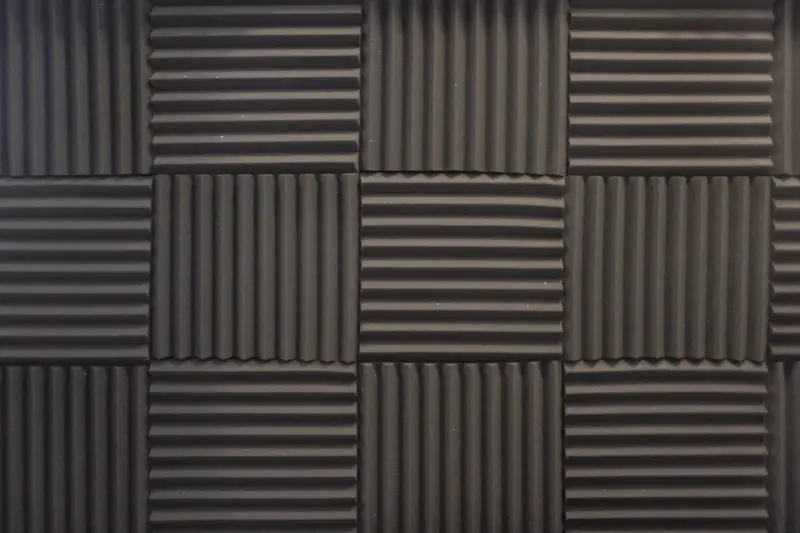
Acoustic panels are fantastic options if you’re in a band or need to record anything in your garage. They completely block out any sound from the outside, creating a quiet, echo-free space for you to pursue your dreams of being a DJ the next number one.
Installing acoustic panels is a simple process using materials you may already have lying around at home. Once you have your panels, use 3M command strips or double-sided strip tape to secure them to the door. You can also use spray adhesive, but this is more expensive, and tape works just fine.
After you’ve finished covering the garage door, you should consider applying the panels to the rest of your garage. Acoustic panels work best when all the walls are covered so that echoes can’t travel anywhere around the room.
It’s important to note that this method is more effective at repelling sound from outside your garage. If your only goal is to dampen the sound coming from inside your garage, then you may want to consider using another material like MLV.
Sound Deadening Blankets
- Purchase more than 1 for Free Shipping.
- Measures 96" x 48" (8' x 4'), contains (3) metal grommets on the top for easy...
- Effective for sound absorption (0.85 NRC Rating), NOT for blocking sound.
Heavy blankets are a cheap and effective method to soundproof a garage door. You may want to use this as a temporary fix for a noisy door until you can install more effective soundproofing like MLV or acoustic panels.
There are two ways you can install blankets onto your garage door. The first requires adhesive like spray adhesive or heavy tape that keeps the blankets in place. In much the same way as MLV and acoustic panels, spray the adhesive and apply the blanket to all the areas you want to cover.
The second way to secure blankets to your garage door is to simply drape them over the door. You can hang the blankets from a clothing line or curtain rods above the garage door. However, you won’t be able to open or close your door when the blankets are in place.
To produce the best soundproofing effect, you should cover both sides of the garage. Yes, that might mean some ugly blankets on the outside of your home. However, only an internal layer won’t absorb all of the noise you might make inside your garage, nor will it block all of the noise from outside either.
4. Cover the Windows
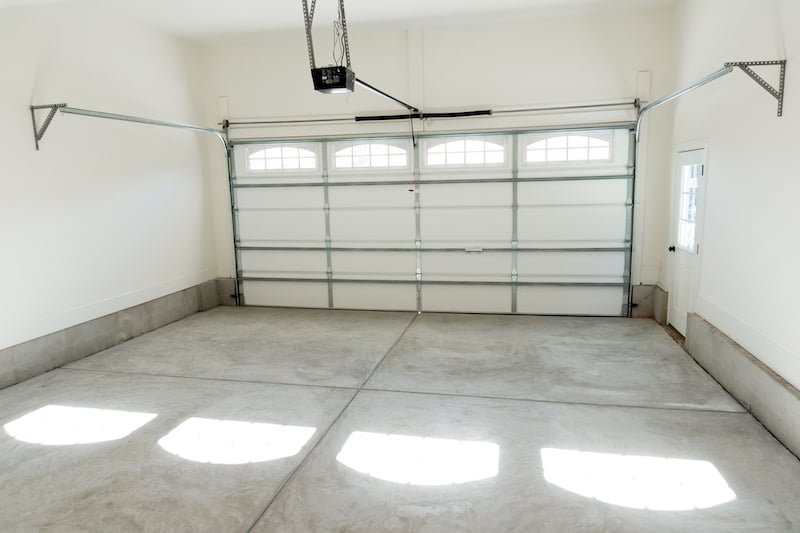
Many garage doors have windows that can create big problems for soundproofing. However, you can insulate windows with soundproofing materials much like you can with your garage door. In fact, any soundproofing you do to your garage door won’t be as effective until you soundproof any windows you may have as well.
First, seal any gaps between the window frame and the rest of the wall with weather-stripping tape. Small flaws in the building material can leak soundwaves, so it’s best to address this area before anything else. It’s great if you can get window-stripping tape, but most types will work fine.
Next, insulate the window frame with soundproofing materials. You can create a window seal out of wood and MLV panels that you can take in and out of the window as you see fit. Attach handles to a wood panel and then secure MLV panels to the other side using adhesive. While fairly straightforward, this method does take a bit more effort than most.
You can also drape a sound-deadening curtain over the window. However, deadening curtains can be expensive, especially for a small space like a garage window. Alternatively, you can use heavy blankets, but they won’t be as effective as the pricier options.
5. Last Resort: Replace the Garage Door
If you’ve tried all of the above methods and your garage is still too noisy, then it might be time for a replacement.
Most garage doors are hollow, meaning sound can travel and echo through the material very easily. Instead, you can opt for a high-quality insulated garage door that is much denser and excellent for soundproofing.
Once you’ve replaced the door, you can then make it even more soundproof by applying the methods listed above. Installing MLV panels along an already insulated garage door is one of the most effective ways to soundproof any garage.
As an acknowledgment, we know that replacing your garage door is obviously the most expensive option on this list. We recommend trying everything above first before jumping into a replacement.
However, suppose you want to do professional sound recording or know you’re going to make a lot of noise in your garage. In that case, it might be better just to replace the door and avoid any future problems that might come up.
Summing up
As you can see, with a little bit of preparation and some basic soundproofing supplies, you can soundproof your garage door with ease to help reduce the noise both inside and out.
With the right tools and knowledge, soundproofing a garage door is an easy DIY project that can be done in a matter of hours.
We hope you’ve found these tips and tricks helpful and good luck with your project.


